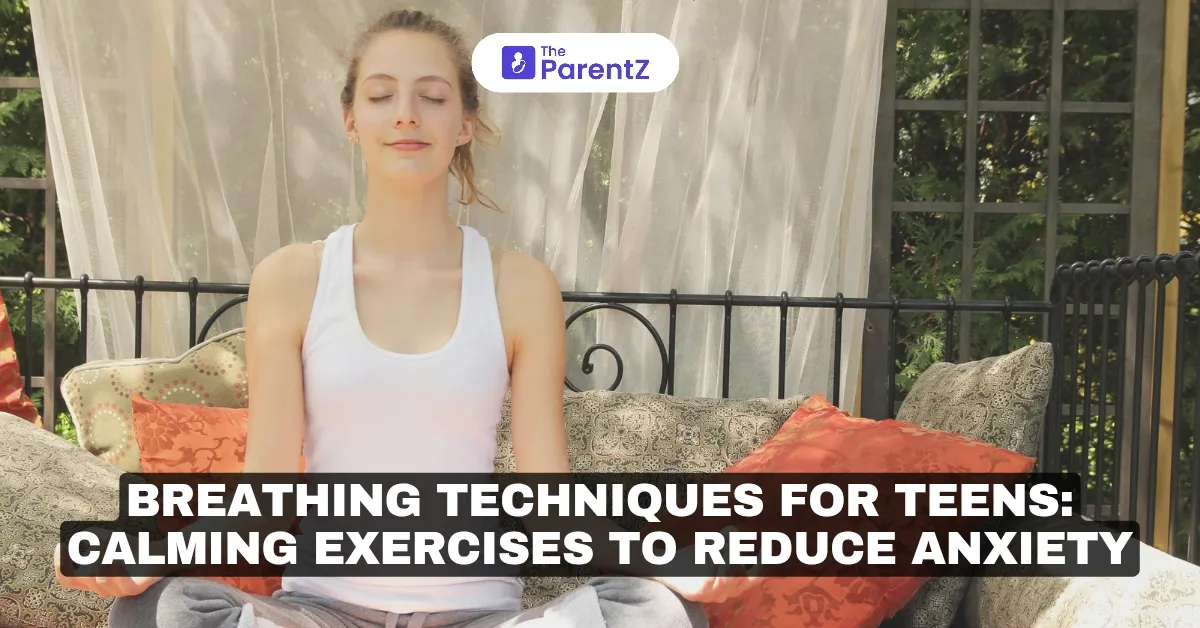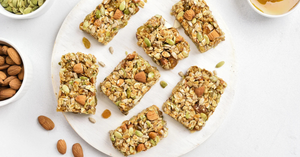Anxiety is becoming increasingly common among teenagers, driven by academic pressure, social challenges, and the demands of growing up in a fast-paced world. While occasional stress is a normal part of life, chronic anxiety can affect mental health, sleep, and overall well-being. One of the simplest yet most powerful tools to manage anxiety is breathing exercises.
Breathing techniques help activate the parasympathetic nervous system, which promotes a state of calmness. They can be done anywhere whether at school, home, or during stressful situations.
Why Breathing Exercises Work for Anxiety
When we’re anxious, our breathing often becomes rapid and shallow, triggering the body’s “fight or flight” response. This can lead to:
• Increased heart rate
• Tightness in the chest
• Dizziness or lightheadedness
Breathing exercises reverse this response by:
• Slowing the heart rate
• Lowering blood pressure
• Promoting relaxation
• Increasing oxygen flow to the brain
Regular practice not only helps during moments of acute anxiety but also reduces overall stress levels over time.
10 Breathing Exercises for Teens to Calm Anxiety
1. Diaphragmatic (Belly) Breathing
How it works: Focuses on deep breathing from the diaphragm rather than shallow chest breathing.
Steps:
1. Sit or lie down comfortably.
2. Place one hand on your chest and the other on your belly.
3. Inhale slowly through your nose for 4 seconds, feeling your belly rise.
4. Exhale gently through your mouth for 4–6 seconds, feeling your belly fall.
5. Repeat for 5–10 minutes.
Benefits: Reduces stress hormones and promotes a deep sense of calm.
2. Box Breathing (Square Breathing)
Popular among athletes and Navy SEALs for stress management.
Steps:
1. Inhale through your nose for 4 counts.
2. Hold your breath for 4 counts.
3. Exhale slowly through your mouth for 4 counts.
4. Hold your breath again for 4 counts.
5. Repeat the cycle 4–5 times.
Benefits: Enhances focus, reduces anxiety, and stabilizes emotions.
3. 4-7-8 Breathing Technique
Developed by Dr. Andrew Weil, this technique is highly effective for anxiety and sleep issues.
Steps:
1. Inhale through your nose for 4 seconds.
2. Hold your breath for 7 seconds.
3. Exhale slowly through your mouth for 8 seconds.
4. Repeat 4 cycles, gradually increasing over time.
Benefits: Calms the mind, reduces stress, and helps with falling asleep faster.
4. Alternate Nostril Breathing (Nadi Shodhana)
A yogic practice that balances the nervous system.
Steps:
1. Sit comfortably with your spine straight.
2. Use your right thumb to close your right nostril.
3. Inhale deeply through your left nostril.
4. Close the left nostril with your ring finger and release the right nostril.
5. Exhale through the right nostril.
6. Inhale through the right nostril, then switch again.
7. Continue for 5 minutes.
Benefits: Reduces anxiety, improves concentration, and balances energy levels.
5. 5-5-5 Breathing (Combat Breathing)
A simple technique often used during stressful situations.
Steps:
1. Inhale deeply through your nose for 5 seconds.
2. Hold your breath for 5 seconds.
3. Exhale slowly through your mouth for 5 seconds.
4. Repeat for 3–5 minutes.
Benefits: Quick stress relief, improves oxygen flow, and clears the mind.
6. Pursed-Lip Breathing
Helps control shortness of breath and promotes relaxation.
Steps:
1. Inhale slowly through your nose for 2 seconds.
2. Purse your lips as if you’re about to whistle.
3. Exhale slowly through pursed lips for 4 seconds.
4. Focus on the slow, controlled exhale.
5. Repeat for 5–10 minutes.
Benefits: Reduces anxiety-related breathlessness and improves lung function.
7. Ocean Breathing (Ujjayi Breath)
A calming technique often used in yoga practice.
Steps:
1. Inhale deeply through your nose.
2. Slightly constrict the back of your throat while exhaling through your nose, creating a soft “ocean wave” sound.
3. Focus on the sound and rhythm of your breath.
4. Continue for 5–7 minutes.
Benefits: Soothes the nervous system, reduces anxiety, and enhances mindfulness.
8. 3-Part Breathing (Dirga Pranayama)
Promotes full lung capacity and awareness of the breath.
Steps:
1. Inhale deeply, first filling your belly with air.
2. Continue inhaling to fill your rib cage, then your upper chest.
3. Exhale in reverse: upper chest, rib cage, then belly.
4. Breathe slowly and deeply, focusing on each part.
5. Repeat for 5–8 minutes.
Benefits: Increases self-awareness, reduces stress, and enhances focus.
9. Humming Bee Breath (Bhramari Pranayama)
A soothing exercise that uses sound vibrations to calm the mind.
Steps:
1. Sit comfortably and close your eyes.
2. Inhale deeply through your nose.
3. Exhale slowly while making a gentle humming sound, like a bee.
4. Feel the vibrations in your head and chest.
5. Repeat 5–7 times.
Benefits: Relieves anxiety, reduces tension, and improves emotional stability.
10. Mindful Breathing with Visualization
Combines breath control with mental imagery for deeper relaxation.
Steps:
1. Close your eyes and take a deep breath.
2. Visualize a peaceful scene, like a beach or forest.
3. As you inhale, imagine drawing in calm, peaceful energy.
4. As you exhale, imagine releasing stress and tension.
5. Focus on the rhythm of your breath and the vividness of the scene.
6. Practice for 5–10 minutes.
Benefits: Enhances relaxation, reduces anxiety, and promotes mindfulness.
Tips for Teens to Get the Most Out of Breathing Exercises
• Consistency is key: Practice daily, even when not feeling anxious.
• Create a calm environment: Find a quiet space to avoid distractions.
• Use apps if needed: Apps like Headspace or Calm can guide breathing exercises.
• Pair with other techniques: Combine breathing with meditation, yoga, or grounding exercises for better results.
When to Seek Professional Help
While breathing exercises are effective, they are not a substitute for professional care in cases of severe anxiety. Seek help if your teen experiences:
• Persistent anxiety interfering with daily life
• Panic attacks
• Sleep disturbances
• Depression or mood changes
Consult a mental health professional for counseling, therapy, or medical support if needed.
Conclusion
Breathing exercises are powerful, simple tools that can help teenagers manage anxiety effectively. They offer immediate relief in stressful moments and promote long-term emotional well-being when practiced regularly. Encouraging your teen to integrate these techniques into their daily routine can make a significant difference in their mental health, fostering resilience, calmness, and confidence.








Be the first one to comment on this story.